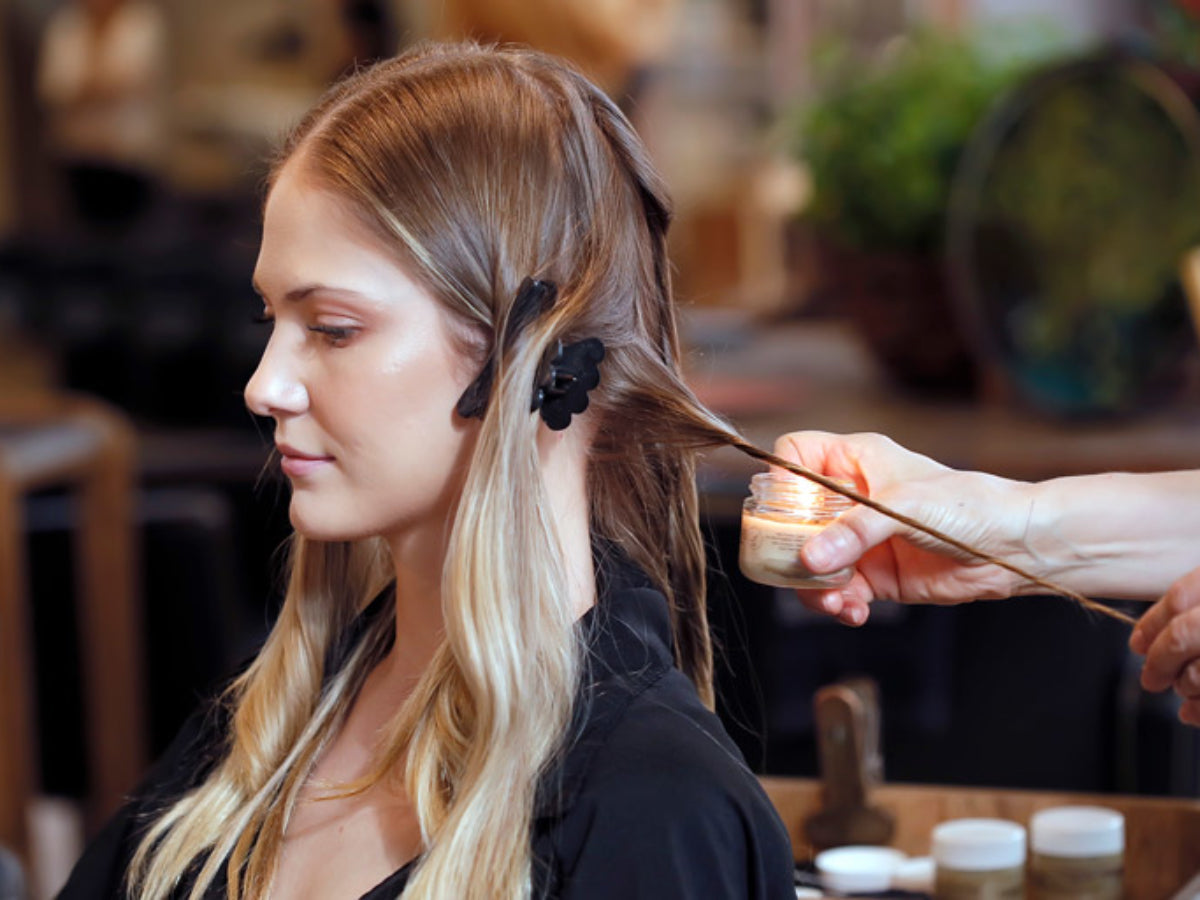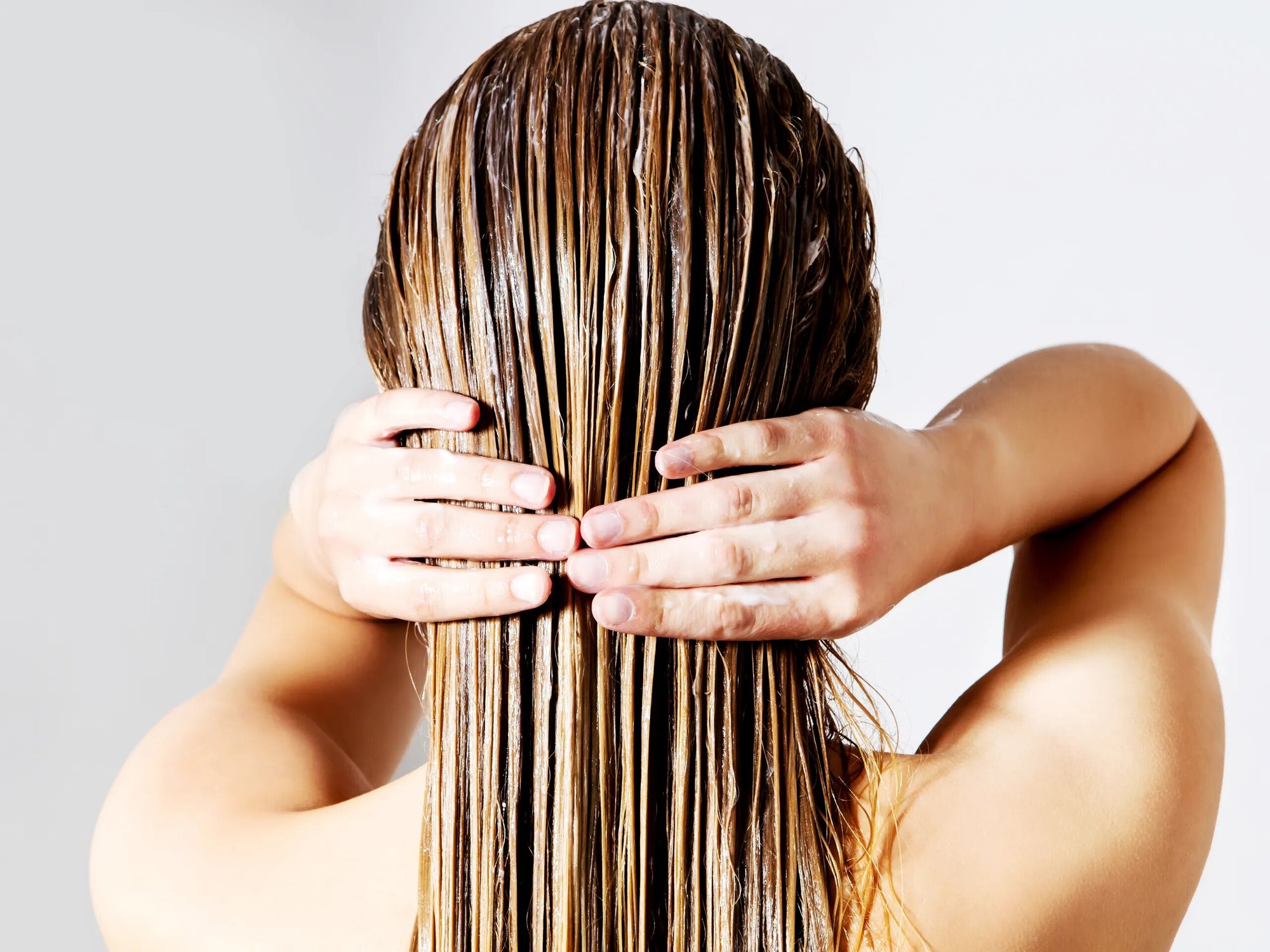Hair has a complex structure because it serves many purposes.
- They have a physiognomic function by protecting your skin and trapping particles like dust around your eyes and ears.
- But hair also has an aesthetic function because you can express yourself through your hairstyle.
This article provides an overview of hair structure . It explains their composition and growth cycles.
Scalp Anatomy
Hair grows from follicles located at the junction between the deep layers of the dermis and hypodermis. These follicles are also called hair bulbs .
Blood circulation is ensured by a small vessel which passes through the interior of the hair shaft , thus providing the hair with all the vital elements it needs to stay healthy such as amino acids, mineral salts or vitamins.
The hair shaft is surrounded by glands, the most important of which is the sebaceous gland , which produces sebum that acts as a natural lubricant for the hair.
On the surface of the scalp, pores drain sweat produced by the sweat glands .
Hair structure
Hair is made up of 95% keratin , a fibrous, helical (propeller-shaped) protein that is part of the skin and all its appendages (hair, nails, etc.).
Keratin is synthesized by keratinocytes and is insoluble in water, thus ensuring the waterproofing and protection of the hair.
Some 18 amino acids are found in hair, such as proline , threonine , leucine and arginine . Keratin is particularly rich in cysteine (a type of sulfur amino acid), which forms disulfide bonds between molecules, adding rigidity and strength to the entire structure.
The hair structure can be divided into 3 distinct parts:

The medulla (marrow):
The innermost layer of the hair shaft, composed of an amorphous, soft, oily substance.
The cuticle
Thin protective outer layer which contains the nourishing part essential for hair growth. It is strongly keratinized, composed of cells
shaped like scales, superimposed on each other, measuring approximately 60 micrometers long and approximately 6 micrometers wide.
The Cortex
Main component of hair, containing long chains of keratin which provide elasticity, flexibility and resistance to the hair. The cells of
cortex are connected together by an intercellular cement rich in lipids and proteins. Each cell is composed of bundles oriented in the direction of the length of the hair: these are macrofibrils which are composed of microfibrils, themselves containing protofibrils.
The role of melanocytes and keratinocytes
The hair cortex also contains melanin . Made by specialized cells called melanocytes, melanin is the pigment responsible for hair color.
Located near the hair bulb, melanocytes inject pigments into the keratinocytes of the new hair shaft.
Color lasts throughout the hair cycle , from genesis to the end, when the hair falls out.
The four stages of the hair growth cycle: Anagen, Catagen, Telogen and Exogen

Agagene phase
What is the agagen phase?
Also called the "growth phase" or "active phase," the anagen phase is when the cells of the hair root divide the most rapidly, resulting in the formation of new hair.
How long is your hair growing?
During the anagen phase, your hair grows about one centimeter per month [about 15 cm per year], and faster in summer than in winter.
How long does the Agagen phase last?
This phase of the hair growth cycle usually lasts 3 to 5 years, which results in hair growth to the full length, 45 to 80 cm. People of Asian descent have a longer anagen phase, which can last up to 7 years, meaning your hair could grow up to 1m long!
The catagen phase
What is the catagen phase?
After the anagen phase, your hair cycle enters a short transition phase called the catagen phase, which marks the end of active hair growth and cuts off individual hairs from the blood supply and cells that produce new hair. About 3% of all hair is in this stage at any time.
How long does the catagen phase last?
About 10 days.
Telogen phase
What is the telogen phase?
The third stage of your natural hair growth cycle is the telogen phase, a resting period during which hair remains in its follicles but is not actively growing. It is estimated that 10-15% of your hair is in the telogen phase at any given time.
How long does the telogen phase last?
About 3 months or 100 days.
Exogenous phase
What is the exogenous phase?
This is the final stage of the hair growth cycle, when each strand is released from its follicle and falls out. The whole process can then start again!
How long does the exogenous phase last?
From 2 to 5 months.
What happens when the hair growth cycle is disrupted?
Each hair follicle is independent and goes through the growth cycle at different times - otherwise all your hair would fall out at once! Instead, you only lose a certain number of hairs per day - 80 to 100 hairs on a healthy head of hair.
Hair loss , thinning hair , and hair growth problems can occur when your growth cycle is disrupted. This can be triggered by conditions such as metabolic imbalances, illness or poor diet.
For example, about 12 weeks after a restrictive diet or high fever, you may experience telogen effluvium (sudden, diffuse hair loss). This occurs when your anagen (growth) phase is shortened and many hairs enter the telogen (resting) phase at the same time, leading to increased hair loss three months later during the exogenous (shedding) phase. ).
If your hair growth cycle is constantly disrupted (for example, if it is not supported by a good diet), your hair may no longer grow as long as it used to. This is because your hair can never stay in the anagen phase long enough to reach the desired length.
How to improve your hair growth?
Adopt a balanced diet and healthy nutrition
A consistent diet that includes a healthy balance of vitamins, iron, fiber, and protein will help regulate your hair growth cycle. You can also incorporate dietary supplements into your daily routine to add an extra layer of control.
Minimize stress
Stress can increase the time your hair spends in the "resting" phases of the cycle, where new hair is not growing. The more you adopt techniques to minimize and manage stress, the more your hair will benefit. To learn more about stress and its impact on your hair, click here.
Choose the right hair care products
Products that specifically address the needs and requirements of your hair, whether thinning or limp, will help your hair get the most out of the phase it is in.
Find out how to use trichoscopy to solve your hair problems !



